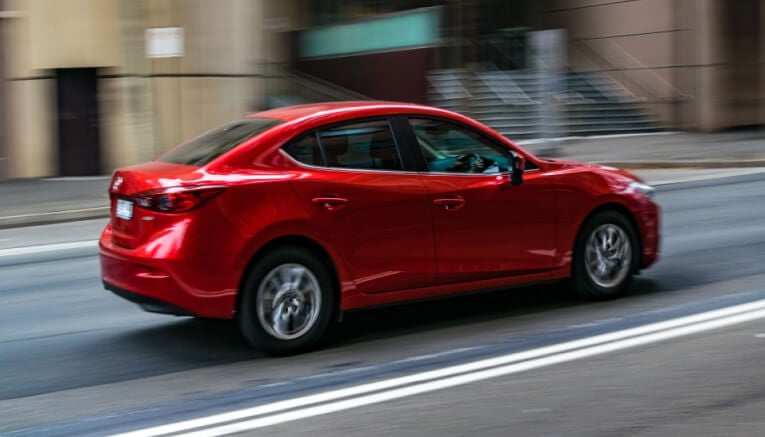It goes without saying that saving money is extremely important for small and medium-sized businesses (SMBs). Here are some great ways that your company can save money, and some things to avoid which can cause you to lose money.
How Small And Medium-sized Businesses Can Save Money
SMB Money-Saving Tip #1: Follow The 80/20 Rule
The 80/20 rule, also known as the Pareto principle, states that roughly 80% of outcomes (or outputs) come from 20% of causes (or inputs). In regard to your business, it essentially follows that you would find, for instance, that 80% of your costs come from 20% of your expenses.
Conversely, you might also find that 80% of your profits come from a 20% subsection of your expenses. Following this rule can be a great way to help small businesses prioritize their business expenses.
Discovering what’s working best allows you to better root out inefficiencies. When it comes time to review your company’s expenses (monthly, quarterly, etc.), the Pareto principle will prove extremely useful.
SMB Money-Saving Tip #2: Automate What You Can
Doing everything manually is a trap that many businesses, large and small, can fall into. The growth of technology moves quickly, perhaps more so in recent years than ever before, so it can be understandably difficult to stay up-to-date on everything new.
Doing your due diligence on what tools, software, and apps will be useful to your company will be a powerful way to save money and time. For instance, if you have a mobile workforce, TripLog’s suite of tools can reduce time spent on things like mileage tracking and time management.
Outdated methods like pen-and-paper mileage tracking can be time-consuming and inaccurate, which can result in costly audits if not done correctly. Some software can even remove the need for having a specific employee entirely.
Related: Why Small Businesses Should Track Their Mileage
In this day and age, if there’s a task being conducted manually by a person, there’s probably an inexpensive app or piece of software that will drastically reduce time and errors.
SMB Money-Saving Tip #3: Hire an Accountant or Bookkeeper
When running a small business, each new penny earned is equally important as the last. Hiring an accountant or CPA (certified public accountant) is a powerful way for SMBs to save money come tax time.
They’re also experts when it comes to regulatory compliance. Audits from the IRS (or your country’s respective revenue service) can be extremely costly, and hiring someone to manage your books can help prevent unintentional finance errors.
Hiring employees is a big cost/benefit problem for businesses of any size, but small businesses have to toe the line especially closely. If hiring a dedicated accountant or CPA is outside of your company’s budget, you still have a few solid options to consider.
Accounting Services & Tools
Instead of hiring an accountant, you can see if a bookkeeper will do what your business needs. While both bookkeepers and accountants are qualified to keep accurate records and record/classify a given company’s daily financial transactions, accountants typically have the distinction of being able to process and interpret data.
Related: 3 Reasons Why Your Small Business Needs An Accountant
Another solid option SMBs could consider would be to try a service like 1-800Accountant. Rather than paying a full-time employee, you can pay a flat fee for a professional service.
Without question, you should be tracking your expenses. Using a powerful tool like TripLog’s expense tracking feature will help you understand your expenses, which in turn can help you make better business decisions.

How Small And Medium-sized Businesses Can Lose Money
How SMBs Can Lose Money #1: Wasteful Spending
Wasteful spending is a problem that all businesses of any size have to deal with, but it can be particularly troublesome for startups. A startup typically has a team with less experience than an established business.
As the money starts flowing in (whether through a loan, investment, or otherwise), it can be tempting to throw it at less-than-useful places. For example, instead of buying a suite of high-end iMacs for your team, first do some research on what your team will need the computers for.
If you only have one graphic designer/video editor and the rest of the team’s work will be limited to word processors, perhaps splurge on the artist’s computer and use the money you’ve thus saved elsewhere. Even for more established companies, cutting office expenses is a great way to save money.
Related: Top 7 Best Expensify Alternatives
Consider purchasing used or refurbished items rather than new ones. This is another scenario where technology can help. There are plenty of apps and solutions like OfferUp or Facebook Marketplace where you can find gently used desks, printers, and computers for significantly cheaper than buying them new.
How SMBs Can Lose Money #2: Not Going Green. No, Really!
The now decades-old perception of going green being costly rather than a great way to save money persists, even here in the mid 2020s. Not only is going green a way to save money, but it also helps keep the planet liveable, giving your company a solid piece of PR to fall on.
Simple things like switching your lightbulbs to LEDs and shutting down computers at the end of each workday can go a long way to saving money. More subtle ways to go green come with using digital tools rather than pen-and-paper.
The COVID-19 pandemic forced everyone to work differently. One of the major changes has been the proliferation of digital documentation tools.
Rather than signing documents in person, more and more people and businesses are discovering that PDFs can be signed digitally and sent via email. Encouraging (and teaching) your team to go digital as often as possible can also help save your company some cash.
Related: IRS Mileage Commuting Rule: What Businesses Need To Know
For example, digitizing documents and storing them in cloud-based servers is a great way to ensure documents don’t get lost or destroyed. In addition, rather than printing out dozens of pages of a document in a given meeting, outfitting your team with inexpensive tablets can be a solid solution as well.
How SMBs Can Lose Money #3: Not Saving a Percentage of Your Revenue
Okay – let’s say you’re following the 80/20 rule to help you prioritize your expenses, you’re automating using modern apps, you’ve hired a bookkeeper or CPA, you’re managing your spending well, and you’ve gone green. Congrats! Now it’s time to look at your revenue and start saving a percentage of it.
Depending on the size of your company, it can be tempting to take every dollar earned and reinvest it right back into your company. While we’re not saying you shouldn’t, you should absolutely take a portion of that profit and place it in a separate account.
Start small (1-2%) and work your way up (5%+). This will quickly give your company a much-needed emergency buffer when times get tough (next pandemic, anyone?).
SMBs Saving Money: In Conclusion
Managing a small to medium-sized business is a challenge, but saving money doesn’t have to be. Taking the time to make the changes, both subtle and big, we discussed above will help save you money.
Using TripLog to manage your company mileage tracking and mileage reimbursement needs will help as well. Visit our mileage reimbursement savings calculator to see how much more you could be earning, or schedule a free demo request today.








